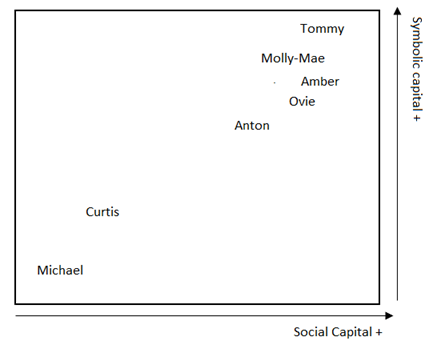Line of Duty returned last week with its sixth series. The programme is phenomenally popular with each series opening to higher ratings than the last, with the first episode of the new series last week reaching 9.6m people. Despite these record viewing figures, the series arrives at a time when there are several controversies over policing and active protests against proposed increased powers for the police nationwide. In this short essay, I want to think about the cultural politics of Line of Duty: a TV programme that putatively turns the investigative eye on to the police themselves but is itself a reactionary product of austerity Britain that taps into the anti-bureaucratic, anti-political correctness sentiment of its time.
The format of Line of Duty is nothing extraordinary, it is one of the most tried and tested formats on TV: a police procedural drama. It locates policing in a post-9/11 – and post de Menezes – world filled with anti-terrorism priorities. It creates its own ‘mythology’ and ‘big bad’ arcs which are commonplace in 21st century TV drama and features some fantastical action sequences. Even the conspiracy elements surrounding ‘bent coppers’ and endemic police corruption were key features of The Bill almost twenty years ago. The true innovation of the programme is in seeing the theatrical potential of bureaucratic procedure. The interview scenes are now a hallmark of the programme: the long, dialogue heavy scenes – usually anathema to an action drama – have become the key theatrical set pieces in the programme. Ultimately it is this focus on the minutiae of bureaucracy that makes the drama of the programme more generally and lends credence to the idea that the show has a particular attention to detail. The drama of a character being delivered a ‘reg 15 notice’ – due process in action – or the demand for questions only to come from an officer one rank higher – following the chain of command – or the various acronyms – highlighting the impersonal rules and procedures – that are used to the point of annoyance.
Despite the bureaucracy itself being the star of the show, the show is at best ambivalent about its star if not entirely anti-bureaucratic. The programme has characters add commentary to create a level of social commentary which ultimately highlights how the bureaucracy itself is failing people. In the earlier series two particular characters served this function – PC Karen Larkin and Neil Morrisey’s DC Nigel Morton.
PC Karen Larkin’s role is a fairly minor character, restricted to one series and the role she performs – the social commentary function – is seemingly displaced in later series as the programme moves to a more action orientated direction. Larkin is portrayed as an obstructive figure, tired of filling out forms and arguably a cipher to the screenwriter’s own thoughts about the state of policing, bureaucracy and political correctness more generally. Much of her dialogue involves saying such a procedure will result in ‘more forms to fill out’ or reminding her partner of the rules and regulations. That her role is to restrain the more noble or pure instincts of her novice partner – and arguably the instincts of the audience in general – lends to the anti-bureaucratic feel of the show. The implicit point of Larkin’s character is that the bureaucracy is getting in the way of good old fashioned community policing. This looks like developing into an essential plot point too by the conclusion of Series 5 when the child ‘failed by the system’ returns.
DC Morton is one of the original ‘bent coppers’ who has been a member of the initial star performing but ultimately corrupt unit investigated in the first series. Morton walks with a limp and cane but as events transpire in the series, it is shown that he is in fact ‘on the take’ and pretending to have a disability in order to increase his earnings. The series continually reminds us in the epilogue of each series that he is close to or claiming ‘a full pension plus disability benefits’. It is important to highlight the particular ‘conjuncture’ within which these characters arrive and what they speak to in the wider political context. Line of Duty debuts in 2012 at a time when David Cameron and George Osborne are speechifying about ‘hard working families’ and the Coalition government is engaging in the greatest public sector retrenchment since the Second World War. The creation of a character like DC Morton is a deliberate attempt to reflect the political context and it too reflects other important formats to emerge at this time, especially the ‘poverty porn’ Reality TV genres. These programmes create an ‘anti-welfare commonsense’ and have been used to show us the undeserving benefit claimant draining our now ‘scarce’ national resources. This is reinforced in these ‘high end’ dramas – not just in the benefit cheat Morton, but also the broken family trope too that is explored in PC Larkin’s story. Moreover, these stories ultimately argue that our bureaucracies are being taken advantage of by scroungers, fakers and the like.
Is it fair to say that the programme is specifically anti-bureaucracy? After all, the work of the anti-corruption units is portrayed as a good versus evil story and the implication is that once the corrupt are found the bureaucracy will be saved. The drama does make a point of highlighting the dangers of the informal aspects of organisation, which have often been held in management theory as things you would want more of in your organisation if your bureaucracy is failing. Despite this, the implicit message of the TV show is that the bureaucracy itself is either allowing people like Morton to take advantage of the system or that removing or foregoing bureaucracy might improve the quality of policing. The overall ‘anti-bureaucratic romanticism’ is itself very of the time given the populism of anti-bureaucracy and anti-political correctness messaging that dominates the British public sphere before, during and particularly after Brexit.
Exploring and critiquing the limits of bureaucracy is a key theme in any crime drama too, whether the modern versus ‘pre-modern’ policing in Life on Mars or the trope of a cop who breaks all the rules to get the bad guy. More generally, TV critiques of bureaucratic dysfunction are in themselves not new either. The Wire is perhaps the most comprehensive examination of bureaucratic dysfunction on TV, a sociological study of city administration masquerading as a police procedural. Each series of the programme examines how the values of the police, education systems and even journalism have been displaced by a numbers driven, instrumental rationality. The difference though between the sources of The Wire and Line of Duty’s critiques are perhaps similar to the ‘social’ and ‘artistic’ critiques that Boltanski and Chiapello identified in The New Spirit of Capitalism. The Wire is more representative of the encompassing ‘social critique’ examining the multiple sources of injustice that contribute to the failed life chances and cycle of violence that themselves produce the dysfunctional policing and bureaucracy we are presented. The implicit idea in the first series of Line of Duty is that if policing is just freed from a domineering and suffocating bureaucracy, then there will be a return to a golden age of community policing.
That Line of Duty reappears now when there are ongoing protests surrounding a bill to give police greater powers is telling. In America, the ‘progressive’ Brooklyn 99 cop sitcom was delayed in light Black Lives Matter with the creators acknowledging that there are problems with striking a balance between comedy and real life police brutality. Line of Duty has had no such issues and its reappearance has been celebrated as a bit of good news in these Covid times. The programme that would see itself as ultimately critical of the police and therefore exempt from similar discussions to Brookyln 99. And why should a TV show that is seemingly critical of police corruption think twice about the ongoing protests around policing? Ultimately the programme that celebrates confusing viewers with bureaucratic processes gives us a paper thin critique of corruption with an underlying commentary that taps into the ‘authoritarian populism’ of our time: law and order, anti-political correctness and ‘anti-bureaucratic romance’.

